Ultimate Guide to Black Anodizing: Process, Benefits, and Applications
 Feb 24,2024
Feb 24,2024

If you are not familiar with black anodizing, then we can explain it for you in simple words. It is a practice of anodizing aluminum (Al). And then dye it black color with appropriate quality dye. This method is not same as black oxide because Al parts can be damaged by black oxide. Black oxide finished aluminum has additional properties of corrosion and wear resistance and better thermal properties. Detailed analysis on black anodizing is discussed in this article. Process of black coating, its advantages, limitation, and applications are explained for your ease in selecting appropriate aluminum coating for any project.
What is Black Anodizing?
Anodizing is an electrochemical process for aluminum metal parts. In this process aluminum is soaked in an acid electrolyte bath. The process occurs at very low temperature in the presence of electrical current. This forms a layer on the surface of aluminum that is hard and has higher corrosion and wear resistance. The metal parts maintain its porosity and allows a coat of black dye on the surface of aluminum. Anodizing creates harder and durable surface of aluminum with exceptional performance in heavy duty applications which is also aesthetically pleasing.
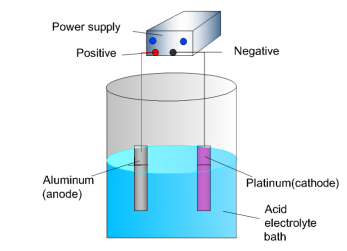
What is the purpose of black anodizing?
Black anodizing is carried out to make aluminum metal parts aesthetically pleasant. It also improves its performance in terms of corrosion and wear resistance and increases hardness and durability of metal parts.
Black Anodized Aluminum Products
Black anodized finish is used for many aluminum parts. Some of them are explained below:
|
Products |
Description |
Images |
|
Smartphone case |
Protect the smartphones from scratches |
|
|
Laptop frames |
It is used to protect laptop and make it scratch free |
|
|
Window frames |
Aluminum window frames are long-lasting |
|
|
Tablet enclosure |
Protect the tablet from scratches. |
|
|
Curtain walls |
Aluminum curtain walls works as eternal cladding system |
|
|
Doors |
Aluminum doors are aesthetically pleasant and are lightweight. |
|
|
Exterior facades |
Aluminum facades have high refraction, and light reflection and makes the interior environment pleasant. |
|
|
Automotive trim |
Aluminum trim has higher strength, durability, ecofriendly, and is recyclable. |
|
|
Bike frames |
Aluminum frames are lightweight, durable, and low cost |
|
|
Cookware |
Aluminum cookware is corrosion resistant and has goof heat transfer. |
|
Types 3 of Anodizing
Anodizing process is of three different types:
- Type I: chromic acid anodizing.
- Type II: sulfuric acid anodizing.
- Type III: hard coat anodizing.
Type I – Chromic Acid Anodize
This method produces the thinnest coating among all. But has the same corrosion and wear resistance properties. It has the least color absorbing capacity. And hence it is not so aesthetically pleasing. Black dye can be done but requires high temperatures of acid electrolyte bath.
Type II – Sulfuric Acid Anodize
Sulfuric acid electrolyte bath is the most common black anodizing. Anodizing creates a thick layer of oxides and has better corrosion and wear resistance. Heat dissipation is better and aluminum coloring has more options because dye absorption is higher in metal parts of type II anodizing.
Type III – Hard coat Anodize
Hard coat anodizing has thickest and dens layer than other types. The black coating is durable. Type III anodizing creates a better surface of aluminum with great electrical insulation properties.
Chinese Machining Services
Precision Engineering for Innovators
Send drawings to info@tuofa-cncmachining.com
Faster and Cheaper
Applications of Black Anodized Aluminum
Applications of black coating are as follows:
- Architecture
Most common black anodized products are window frames, doors, Decoratives and many more for outdoor components. Because black coating is long lasting, aesthetically pleasing and has better corrosion and wear resistance.
- Electronic housing
Smartphone cases, laptop frames, Tablet enclosures are common example of black coating. The black anodized finish has better heat dissipation, is lightweight and the components are eco-friendly.
- Automotive components
Trims, gears, body and engine parts are mostly made of aluminum because the black coating has more corrosion and wear resistance along with chemical and weather resistance.
- Military and defense equipment
The hardness and heat dissipation of black coating is outstanding. Firearms, tactical gears, flashlights are the common applications in military equipment.
- Cookware and kitchen appliances
Ovens, stoves, grills, and cookware utensils are mostly made of black anodized finish because of better heat dissipation, corrosion, and wear resistance. appliances of black coating also are aesthetically pleasant.
- Medical tools and devices
Surgical tools, walkers, wheelchairs, oxygen tanks are made of black anodize finish. Anodize creates sterilizable black coating which has high chemical resistance.
- Industrial equipment and machinery
Gaskets, valves, rollers, and many more are common mechanical parts of anodized aluminum. These products have high abrasion resistance and are long lasting.
Black Anodizing Process
Black anodize finish process is same as normal electrochemical process in an acid electrolyte bath and then black dye of aluminum parts is carried out. The steps of black aluminum coloring are as follows:
- Anodizing
It is an electrochemical process and oxidation occurs on the surface of metal part. The surface of aluminum acts as anode in an acid electrolyte bath and current passes through it. Oxygen molecules cover the surface of aluminum and form an oxide layer.
- Dyeing
Black anodize metal part has porous surface. These pores store black dye in the metal surface. Dyes are normally of three types: organic dyes, inorganic dyes and electrolytic dyes with metal salt.
- Sealing
The dyed black metal parts are sealed in acid baths or nickel acetate baths. This sealing locks the pores present at the surface of aluminum. Bleeding of color from the surface is locked which prevents it from fading and increases the color stability.
Limitations and advantage
Black anodize finish has various pros and cons.
Limitations
The limitations of black aluminum coloring are as:
- Limited material
Black coating cannot be done on every material. very limited materials like 5xxx, 6xxx and 7xxx aluminum series can be dyed black. Most common is 6xxx aluminum series is dyed black.
- Surface cracking
In some cases, the surface of aluminum starts cracking. This occurs in repetitive thermal cycling and crack occurs due to the difference in the temperature of substrate and black coating.
Advantage
Advantages of black anodize finish are countless and some of them are explained below:
- Corrosion and wear resistance
Anodize finish protects the metal surface from oxidation and corrosion. It is most suitable for use outdoors because it has chemicals, humidity, saltwater resistance. Any base metal part with low resistance can become highly corrosion and wear resistant material by black coating.
- Aesthetically pleasing
The surface of aluminum has a matter black finish which is highly recommended for decorative purposes. This coating is less costly than powder coating.
- High durability
The adhesion of black coating over the surface of aluminum is outstanding and provides scratch and abrasion resistance to coating which increases its durability. Color fading minimizes and black dye is sealed properly into the pores of metal surface.
- Heat emissivity
If the metal parts are dyed black frequently, it improves heat emissivity. This is common for heat sink and satellite parts applications.
- No outgassing
Proper sealing of black dyed aluminum parts prevents it from outgassing in vacuum. This is mainly useful for sensitive equipment.
Materials And Equipment Needed for Black Anodizing Process
The materials and equipment required for black anodized finish are:
- Acid electrolyte bath (sulfuric acid).
- Acid resistant tank for electrolyte.
- Cathode.
- Power source.
- Conducting wires.
- Cleaning degassers.
- Dyeing bath for black dyeing of aluminum parts.
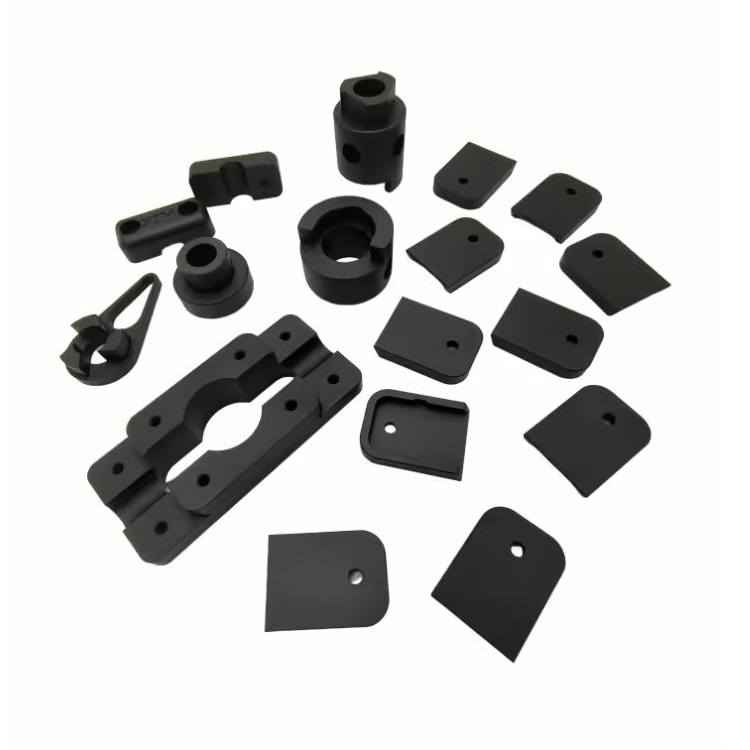
How to Anodize Aluminum Black
Among the three types of black coating, Type II-sulfuric acid is the most common method. The process of anodizing aluminum black is as:
- Metal part is cleaned thoroughly with degasser. It is necessary to remove prior dirt or any grease from the metal surface for better adhesion.
- The metal part is then rinsed in deionized water.
- Metal surface is etched chemically to remove already existing oxide layer.
- Part is rinsed again with deionized solution.
- Anodizing of aluminum surface is done in electrolytic sulfuric acid bath in the presence of current. An aluminum oxide layer is formed which has a semi porous structure.
- The metal part is then rinsed in a dyeing bath for black aluminum coloring. Dyes that are used normally are organic dyes, inorganic dyes, and electrolytic dyes. Metal salts are normally preferred because of better color fastening.
Dyeing Techniques in Black Anodizing
There are three types of dyeing technique used in black coating. These are as:
- Organic dye:
These are dissolved in hot water and then pour in dye bath. Metal part is submerged in the bath and the semi porous surface helps in dyeing black the surface of aluminum. Black dyeing needed extra dyeing time as compared to other coloring. If the part has outdoor applications, organic dyes are not recommended.
- Inorganic dyes
Inorganic dyes are insoluble in water. These increases the light fastness of coating. Common inorganic dye is cobalt sulfide salt for black anodized finish.
- Electrolytic dyes
When the anodizing has taken place, the part is submerged in another electrolytic bath with the solution of heavy metal salts. Cathode is the anodic layer, and a stainless-steel electrode is placed inside the solution. The metal salts are deposited over the surface of aluminum as dye and travels to the bottom of pores. Normally metal salts are nickel, cobalt, and tin to create a range of colors. This produces coating with outstanding color fastness.
What is the Cost of Black Anodized Metal?
Black anodized finish is a cost-effective process. The color finishes last longer than the other powder coating. Dyes and tools used in this method are also not expensive. Minimum charges of black coating are between &65-125 for Type II finish. If it is done in bulk, the price decreases further.
Comparative Analysis of Anodize Finishes
Type II is the most common type of black anodizing. In terms of thickness, Type I has the least thickness and Type III is the thickest and the hardest one. Type II is the moderate type of coating covering all the properties of black anodizing suitable for many applications.
Try Tuofa Now!
Custom solutions for complex designs: send drawings to info@tuofa-cncmachining.com
Real human quotes are more accurate than software quotes
Color fastness and dye stability
Black anodized finish metal parts have the best color fastness when dyed with inorganic dyes and electrolyte dyes. They also retain their colors when exposed to UV light.
Advanced Materials Compatibility
Black anodizing process is an eco-friendly process and does not produce any kind of toxic chemicals, wastes, emission as a byproduct unlike the painting or powder coating. Most of the acids used in this process are recyclable.
However, this process can be challenging when proper cleaning and pre-treatment are not done. It is important to control anodizing and dyes carefully. Improper and inconsistent process routine can result in uneven or poor coating which increases the production cost. Skilled labor and well-maintained tools are the primary requirement. Also, proper masking of unwanted metal parts to be anodized must be done. It can be time consuming for complex geometry. But improper masking can result in machining of metal surface.
Conclusion
It is an electrochemical process of coloring aluminum. It creates a semi porous surface of aluminum which can be dyed black by organic dye, inorganic dye or electrolytic dye. Black anodized finish has high durability and high corrosion and wear resistance. Heat dissipation and thermal properties are good of black coating.
TUOFA CNC machining is the most reliable source for different type of aluminum coatings for your project. TUOFA offers a variety of services in color coating of aluminum. Further information is available on: https://www.tuofa-cncmachining.com/
FAQ
The difference between black oxide coating and black anodizing
Black oxide coating involves chemical conversion. Black oxide can be of three types: hot temperature, mild temperature and cold. While the black anodizing is an electrochemical process which occurs at low temperature in the presence of electrical current.
Will black anodizing fade, rust, or scratch?
Anodized aluminum cannot be fade, corrode or scratch. The formation of aluminum oxide layer on the surface of aluminum protect the material from corrosion, scratches and its color fastness and dye stability is exceptional which cannot fade.
Is black anodizing environmentally friendly?
Yes, black anodizing is an eco-friendly process. It does not emit fumes, toxic chemical, or waste as byproduct. Most of the acids are reusable in this process.
How to clean black anodized metal parts?
Mild soap, alcohol and acetone can be used to clean the anodized metal part. It is not recommended to sue to alkaline cleaners as it can damage the coating and can fade away the color.
 Tel/WeChat:
Tel/WeChat:  Email:
Email: 
 Home
Home
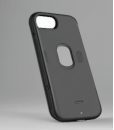

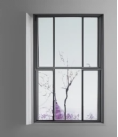
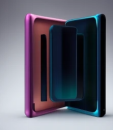

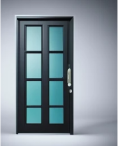
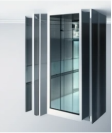

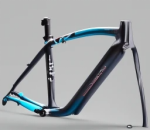
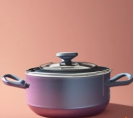
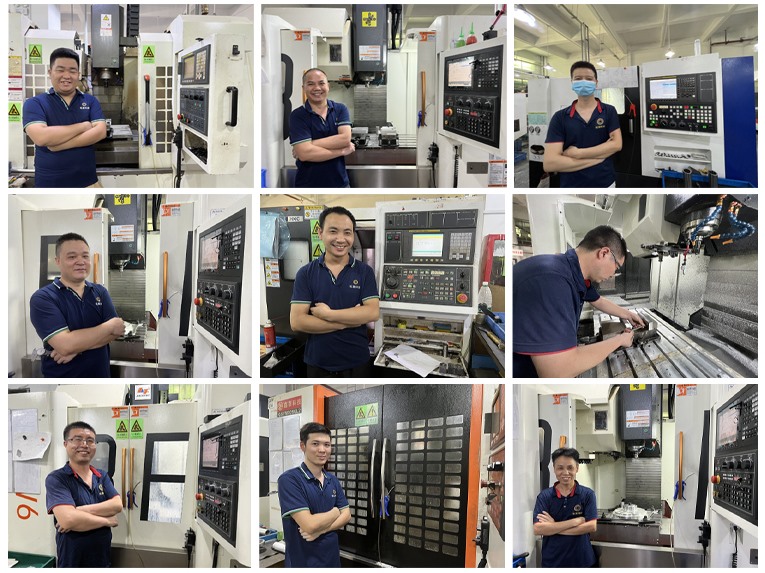

 7 Techniques for Steel Hardening | How to Harden Steel
7 Techniques for Steel Hardening | How to Harden Steel 







